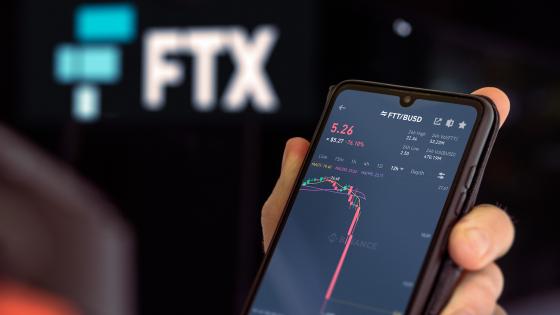Cryptocurrencies are as divisive as ever. Crypto supporters disagree on whether crypto should remain true to its anti-establishment roots or integrate into the mainstream financial system, while the financial authorities are unsure if crypto should be extinguished, ignored, or harnessed for good.
Regardless of how that plays out, cryptocurrencies are set to leave a fine legacy, having had a considerable and positive impact on the financial system. Before crypto, the infrastructure of the financial system, the plumbing that is so essential and usually ignored, remained a niche area of study. While that suited the incumbents and the financial authorities, it also meant a highly inefficient payment system and significant rent extraction.
Cryptocurrencies threaten that cosy little world, and the existing setup has come under considerable challenge, witnessed by the financial system's plumbing becoming worthy of study, as manifested by many articles published here on Vox, like Schoenholtz and Cecchetti (2021) and Belmonte et al. (2022).
The competition from crypto has forced the public and private sector incumbents to address the system's inefficiencies and rent extraction, with Brazil's PIX an excellent example of what the financial authorities can accomplish when sufficiently motivated. The threat of payments made with tokens, overseen by smart contracts and not under the control of any national government, has compelled many authorities to enhance the payment system and remains the primary motivator of central bank digital currencies.
Along the way, both the public and private sectors face major challenges. The private sector crypto proponents need to decide on whether to embrace the mainstream banking system or stay as far away from it as possible, while the authorities have to decide whether to embrace, ignore, or extinguish crypto.
The phases and politics of crypto
At their essence, cryptocurrencies are a political movement. Satoshi Nakamoto's original Bitcoin paper (Nakamoto 2009) argues that technology can solve the problems of the existing financial system, and the adoption of Bitcoin and other cryptocurrencies has been driven by techno-libertarians who see crypto as the solution to a corrupt and inefficient financial system. While they remain a small fraction of crypto promoters, they have been critical to its success. Without the crypto-libertarians, cryptocurrencies would never have taken off.
Crypto has undergone two phases in its 14-year history and is entering the third (Danielsson 2022). From the first phase, 2009, when Bitcoin was created, to the end of 2018, crypto stayed outside the mainstream financial system, benefiting from the significant price increases, as the price of Bitcoin rose from four US cents to over $20,000.
I choose 2018 as signalling a phase change since that is when the extremely rapid crypto price rises effectively stopped. The primary transactional use of crypto in the first phase was criminality because of its purported, but never true, promise of private transactions not monitored by law enforcement. The only government authority that paid close attention to crypto in its first phase was law enforcement, concerning as even if crypto never posed more danger to macro and micro stability than in 2018, the financial authorities almost entirely ignored it, at least publicly.
Since 2018, crypto has entered the mainstream in its second, more stable phase. Its prices are basically the same today as they were then, and there has been an explosion of technological developments, not the least with stablecoins. The financial authorities have started to pay notice, requiring most crypto exchanges to adhere to the law-enforcement-like aspects of financial regulations, anti-money laundering, sanctions, and know-your-customer rules.
Crypto is now entering its third and final phase, facing more serious threats than ever. The crypto community is, perhaps irrevocably, split. Crypto businesses are trying hard to fully integrate into the mainstream financial system, seeking to be regulated like any other financial institution. That is, of course, a red flag to the crypto libertarians, and it will be interesting to observe how the increasingly fractured crypto world evolves. Perhaps crypto will fork into mainstream and non-official versions.
The options for the financial authorities
The financial authorities are divided on what to do about cryptocurrency, with three directions mooted.
One, what might be termed control and extinguish, aims to manage crypto and limit its adoption as much as possible, sometimes discussed as pouring sand in the works, hoping that mainstream investors will abandon crypto. We see that both with the SEC's outspoken anti-crypto stance in the US and the non-public but more successful European regulations. Europe seems motivated by a strong official aversion to innovation and new entrants into the financial system, while the US appears to have microprudential concerns.
The control and extinguish approach is misguided both politically and technically. Anti-crypto actions give ammunition to the crypto libertarians who drive crypto adoption and see the central banks and the private sector as corrupt and inefficient. Many agree with that sentiment, even if they don't have a view on crypto. Stifling progress and unfair treatment of crypto will increase support for crypto libertarians, and risk is becoming a totem for populists on the left and the right. A heavy-handed approach to crypto could lead to another Ruby Ridge moment by giving crypto enthusiasts a shared cause and fuelling crypto rather than eliminating it.
The prudent strategy for those wishing to eradicate cryptocurrencies is to ask why crypto continues to gain traction and what policies will reduce crypto's attraction, depriving it of the oxygen that permits it to flourish. That will not be accomplished by putting sand in the works, what the crypto industry refers to as Operation Chokepoint 2.
The constructive policy approach recognises that crypto can be a force for good, even when preferring a fiat monetary system. Crypto drives welcome financial innovation, attracting the attention of high-quality researchers and bringing much-needed discipline to the incumbents, thereby enhancing the efficiency of the financial system while reducing rent extraction.
We are starting to see that work in the competition between stablecoins and central bank digital currencies. Both aim at the same market and have similar technical underpinnings, strengths and weaknesses. The private approach brings nimbleness, while the central banks provide trust. The competition between the two can only lead to a more efficient system of financial intermediation that will benefit everybody except the incumbents and those who dislike change.
Conclusion
Cryptocurrencies are at a crossroads as they enter their third phase. Will crypto enter the mainstream, or will it break into two fundamentally different routes – one mainstream and one in the wilderness? Will crypto libertarians ditch crypto? The government may try to put it out of business or make use of the opportunities it affords.
It would be a mistake for the authorities to suppress crypto, as that will likely be counterproductive and fuel the anti-establishment sentiments so fundamental to crypto success. Even though I remain a crypto sceptic (Danielsson 2018) and would like to see it disappear into irrelevance, the best outcome is to learn from it.
Crypto's greatest legacy is that it opened our eyes to the inefficiencies and rent extraction of the present arrangement, giving new ways of thinking about financial intermediation. The optimal official strategy is then for crypto to exist outside the mainstream while continuing to challenge it, strongly motivating the incumbents and the financial authorities to improve the payments infrastructure.
References
Belmonte, S M, J Stodder and C Gelleri (2022), “Central bank digital currencies, community currencies, and the reinvention of money”, VoxEU.org, 8 Apr.
Danielsson (2018), “Cryptocurrencies don't make sense”, VoxEU.org, 13 Feb.
Danielsson (2022), “The beginning of the end for cryptocurrencies”, VoxEU.org, 29 Nov.
Nakamoto, S, (2009), Bitcoin: A Peer-to-Peer Electronic Cash System.
Schoenholtz K L and S Cecchetti (2021), “Central bank digital currency: The battle for the soul of the financial system”, VoxEU.org, 8 July.



